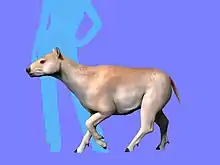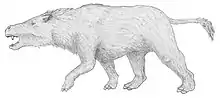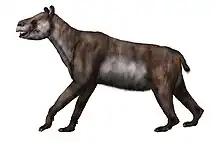Edvardotrouessartia
Edvardotrouessartia is an extinct genus of South American placental mammal that lived during the Middle Eocene of Patagonia. It belonged to the family Notostylopidae, and the order Notoungulata. It is among the many genera of South American ungulates that populated America during much of the Cenozoic, without leaving any modern descendants.[1]
| Edvardotrouessartia Temporal range: Middle Eocene ~ | |
|---|---|
 | |
| Scientific classification | |
| Domain: | Eukaryota |
| Kingdom: | Animalia |
| Phylum: | Chordata |
| Class: | Mammalia |
| Order: | †Notoungulata |
| Family: | †Notostylopidae |
| Genus: | †Edvardotrouessartia Ameghino 1901 |
| Type species | |
| †Edvardotrouessartia sola Ameghino, 1901 | |
| Species | |
| |
Etymology
Edvardotrouessartia was named to honor the french zoologist Édouard Louis Trouessart.
Characteristics
Edvardotrouessartia is the largest known member of the family Notostylopidae.[2]
References
- Ameghino, Florentino; Torcelli, Alfredo J (1913). Taller de Impresiones Oficiales (ed.). Obras completas y correspondencia cientifica de Florentino Ameghino. Ed. oficial ordenada por el gobierno de la Provincia de Buenos Aires, dirigida por Alfredo J. Torcelli. doi:10.5962/bhl.title.24933.
- Lorente, Malena; Gelfo, Javier N.; López, Guillermo M. (18 December 2018). "First skeleton of the notoungulate mammalNotostylops murinusand palaeobiology of Eocene Notostylopidae". Lethaia. 52 (2): 244–259. doi:10.1111/let.12310. ISSN 0024-1164. S2CID 135127572.
This article is issued from Wikipedia. The text is licensed under Creative Commons - Attribution - Sharealike. Additional terms may apply for the media files.

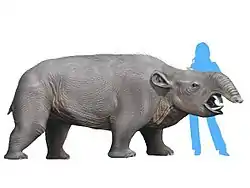
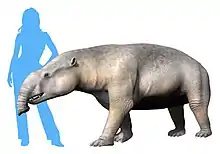
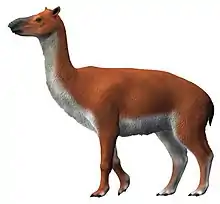
.jpg.webp)
